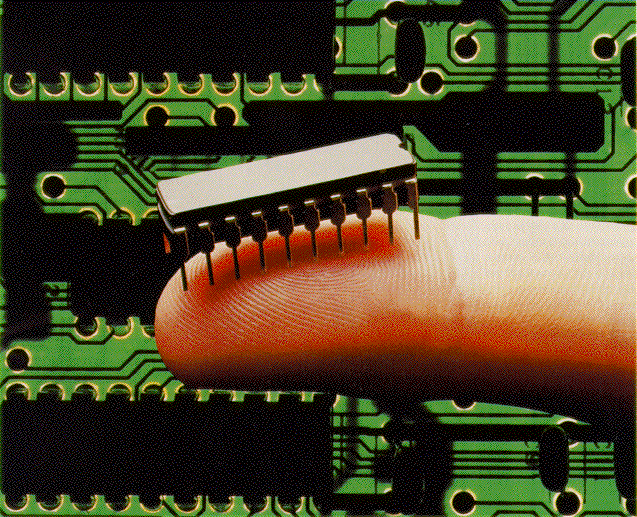




The semiconductor industry has developed into a $100 billion industry. The current process for fabricating practical silicon semiconductor devices typically involves eight different steps, some of which are repeatedly employed to generate certain electrical characteristics.
The first stage of the semiconductor manufacturing process involves growing a single crystal of silicon into a solid cylindrical shape. The silicon is first purified and heated into a bath of molten liquid, into which a small crystal of silicon, called a seed, is dipped. As the seed is slowly withdrawn, the surface tension between the seed and the molten silicon causes some liquid to rise with the seed. The liquid solidifies around the seed to form a single crystal ingot.
The solid cylinder of silicon, typically 20 cm in diameter, is then ground to a uniform diameter and cut with a diamond saw blade to about 200 mm thick. Each wafer is cleaned, smoothed, and polished through a series of machines.
Thin films are generated to provide physical or electrical isolation between two adjacent layers or to prepare the wafer for the subsequent doping and lithography stages. They are generated by two different methods - thermal oxidation and chemical vapor deposition (CVD).
Thermal oxidation is typically used to grow a layer of silicon dioxide on a silicon substrate. It involves reacting the silicon substrate with oxygen in a furnace at about 1000-1200°C. The oxygen can be in the form of a highly pure gas, in which case it is a dry oxide, or as water vapor, in which case it is a wet oxide. In general, a dry oxide has better electrical characteristics, whereas a wet oxide has a faster growth rate. The advantage of thermal oxidation is that the grown silicon dioxide layer is very uniform. However, it use is limited to early stages of the semiconductor fabrication process when the silicon substrate is still exposed.
Chemical vapor deposition is a method used to deposit silicon dioxide and silicon nitride layers. Because CVD does not use silicon substrate as a reactant, it can be used throughout the manufacturing process. The deposition of silicon dioxide is achieved by combining silane gas and pure oxygen gas at temperatures of about 400-500°C. When a silicon dioxide layer is deposited above a layer with certain dopants, an insulating film of silicon nitride is usually also generated to prevent the diffusion of these dopants. The deposition of silicon nitride is performed by combining silane and ammonia at temperatures of 700-900°C. The advantages of CVD over thermal oxidation are that lower temperatures are required and that generation times are faster. However, film coverage is not as good. A common variant of this process is low-pressure CVD (LPCVD), which uses low pressures to improve the uniformity of the layer, but typically with a trade-off in the deposition rate.